Zuyuan He
DAS-MAE: A self-supervised pre-training framework for universal and high-performance representation learning of distributed fiber-optic acoustic sensing
Jun 05, 2025Abstract:Distributed fiber-optic acoustic sensing (DAS) has emerged as a transformative approach for distributed vibration measurement with high spatial resolution and long measurement range while maintaining cost-efficiency. However, the two-dimensional spatial-temporal DAS signals present analytical challenges. The abstract signal morphology lacking intuitive physical correspondence complicates human interpretation, and its unique spatial-temporal coupling renders conventional image processing methods suboptimal. This study investigates spatial-temporal characteristics and proposes a self-supervised pre-training framework that learns signals' representations through a mask-reconstruction task. This framework is named the DAS Masked AutoEncoder (DAS-MAE). The DAS-MAE learns high-level representations (e.g., event class) without using labels. It achieves up to 1% error and 64.5% relative improvement (RI) over the semi-supervised baseline in few-shot classification tasks. In a practical external damage prevention application, DAS-MAE attains a 5.0% recognition error, marking a 75.7% RI over supervised training from scratch. These results demonstrate the high-performance and universal representations learned by the DAS-MAE framework, highlighting its potential as a foundation model for analyzing massive unlabeled DAS signals.
Waveguide Superlattices with Artificial Gauge Field Towards Colorless and Crosstalkless Ultrahigh-Density Photonic Integration
Jul 10, 2024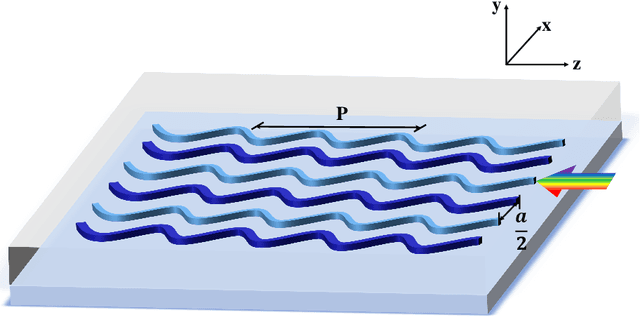
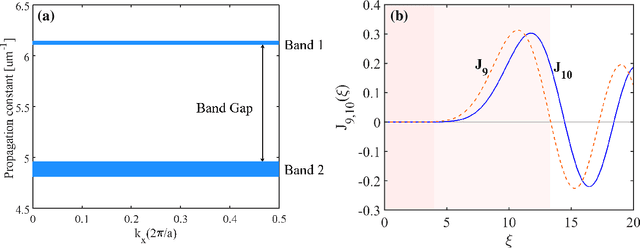
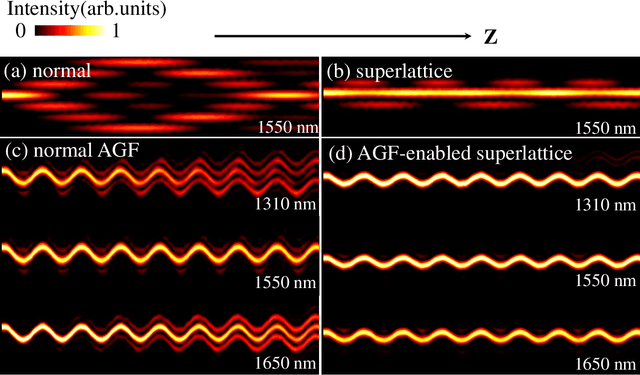
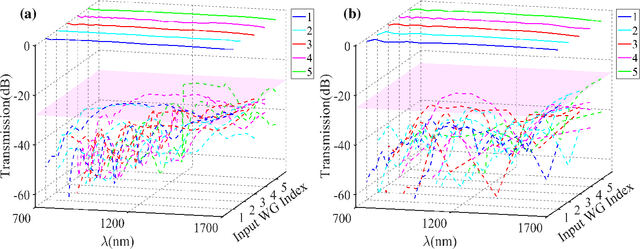
Abstract:Dense waveguide arrays with low crosstalk and ultra-broadband remain a vital issue for chip-scale integrated photonics. However, the sub-wavelength regime of such devices has not been adequately explored in practice. Herein, we propose the advanced waveguide superlattices leveraging the artificial gauge field mechanism. This approach achieves remarkable -24 dB crosstalk suppression with an ultra-broadband bandwidth, experimentally demonstrated over 500 nm, in silicon nitride waveguides. Moreover, the 112 Gbit/s signal encoded per channel of ultra-compact circuits with a bit error rate below the 7% forward error correction limit verified the capability for high-speed on-chip transmission. This design is compatible with metal back end-of-the-line (BEOL) processes and can be readily transferred to other platforms. Thus it holds great promise for significant reduction in on-chip footprint and cost in large-scale integrated photonics, and salient enhancement in the performance of a wide range of active and passive photonic devices and systems.
Hierarchical Generative Network for Face Morphing Attacks
Mar 17, 2024
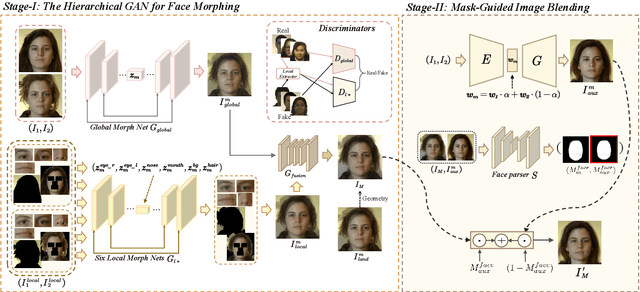
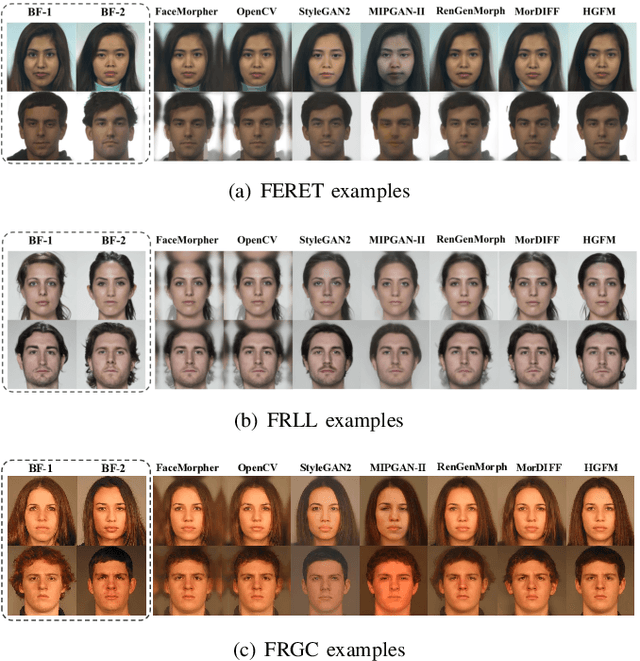

Abstract:Face morphing attacks circumvent face recognition systems (FRSs) by creating a morphed image that contains multiple identities. However, existing face morphing attack methods either sacrifice image quality or compromise the identity preservation capability. Consequently, these attacks fail to bypass FRSs verification well while still managing to deceive human observers. These methods typically rely on global information from contributing images, ignoring the detailed information from effective facial regions. To address the above issues, we propose a novel morphing attack method to improve the quality of morphed images and better preserve the contributing identities. Our proposed method leverages the hierarchical generative network to capture both local detailed and global consistency information. Additionally, a mask-guided image blending module is dedicated to removing artifacts from areas outside the face to improve the image's visual quality. The proposed attack method is compared to state-of-the-art methods on three public datasets in terms of FRSs' vulnerability, attack detectability, and image quality. The results show our method's potential threat of deceiving FRSs while being capable of passing multiple morphing attack detection (MAD) scenarios.
Optimal-Landmark-Guided Image Blending for Face Morphing Attacks
Jan 30, 2024
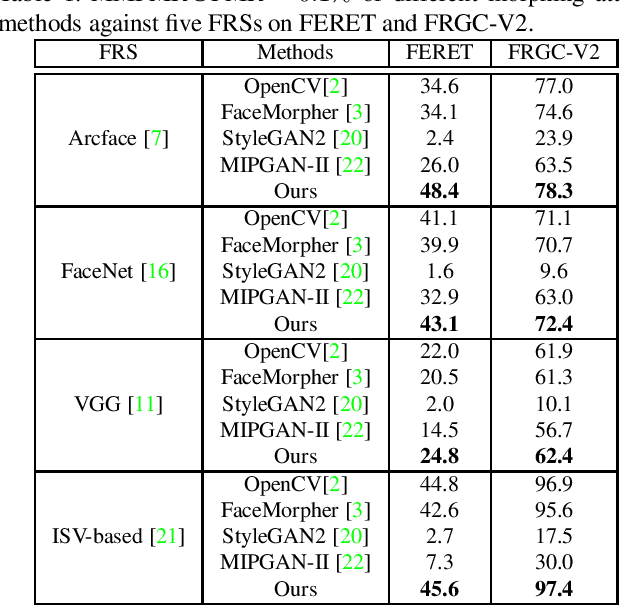
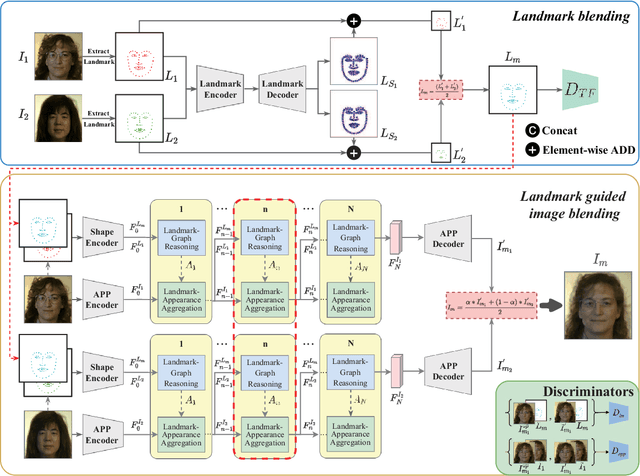
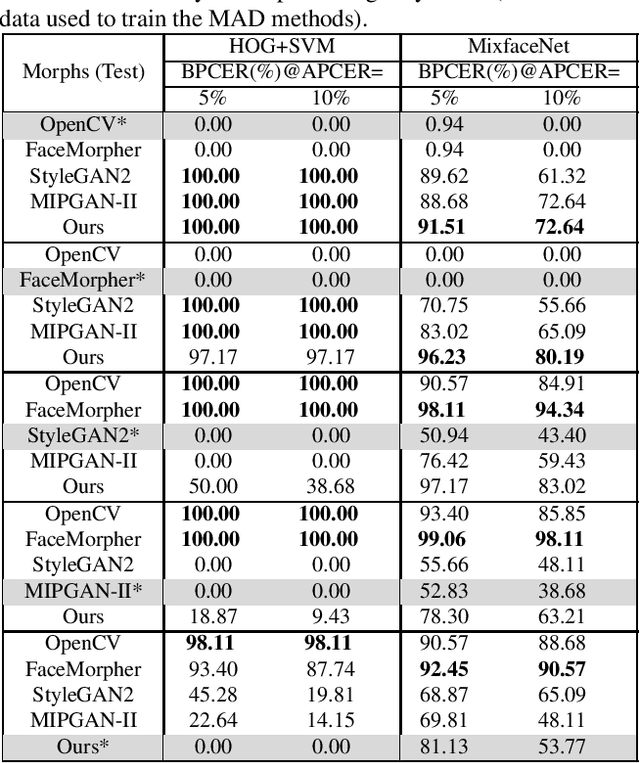
Abstract:In this paper, we propose a novel approach for conducting face morphing attacks, which utilizes optimal-landmark-guided image blending. Current face morphing attacks can be categorized into landmark-based and generation-based approaches. Landmark-based methods use geometric transformations to warp facial regions according to averaged landmarks but often produce morphed images with poor visual quality. Generation-based methods, which employ generation models to blend multiple face images, can achieve better visual quality but are often unsuccessful in generating morphed images that can effectively evade state-of-the-art face recognition systems~(FRSs). Our proposed method overcomes the limitations of previous approaches by optimizing the morphing landmarks and using Graph Convolutional Networks (GCNs) to combine landmark and appearance features. We model facial landmarks as nodes in a bipartite graph that is fully connected and utilize GCNs to simulate their spatial and structural relationships. The aim is to capture variations in facial shape and enable accurate manipulation of facial appearance features during the warping process, resulting in morphed facial images that are highly realistic and visually faithful. Experiments on two public datasets prove that our method inherits the advantages of previous landmark-based and generation-based methods and generates morphed images with higher quality, posing a more significant threat to state-of-the-art FRSs.
 Add to Chrome
Add to Chrome Add to Firefox
Add to Firefox Add to Edge
Add to Edge